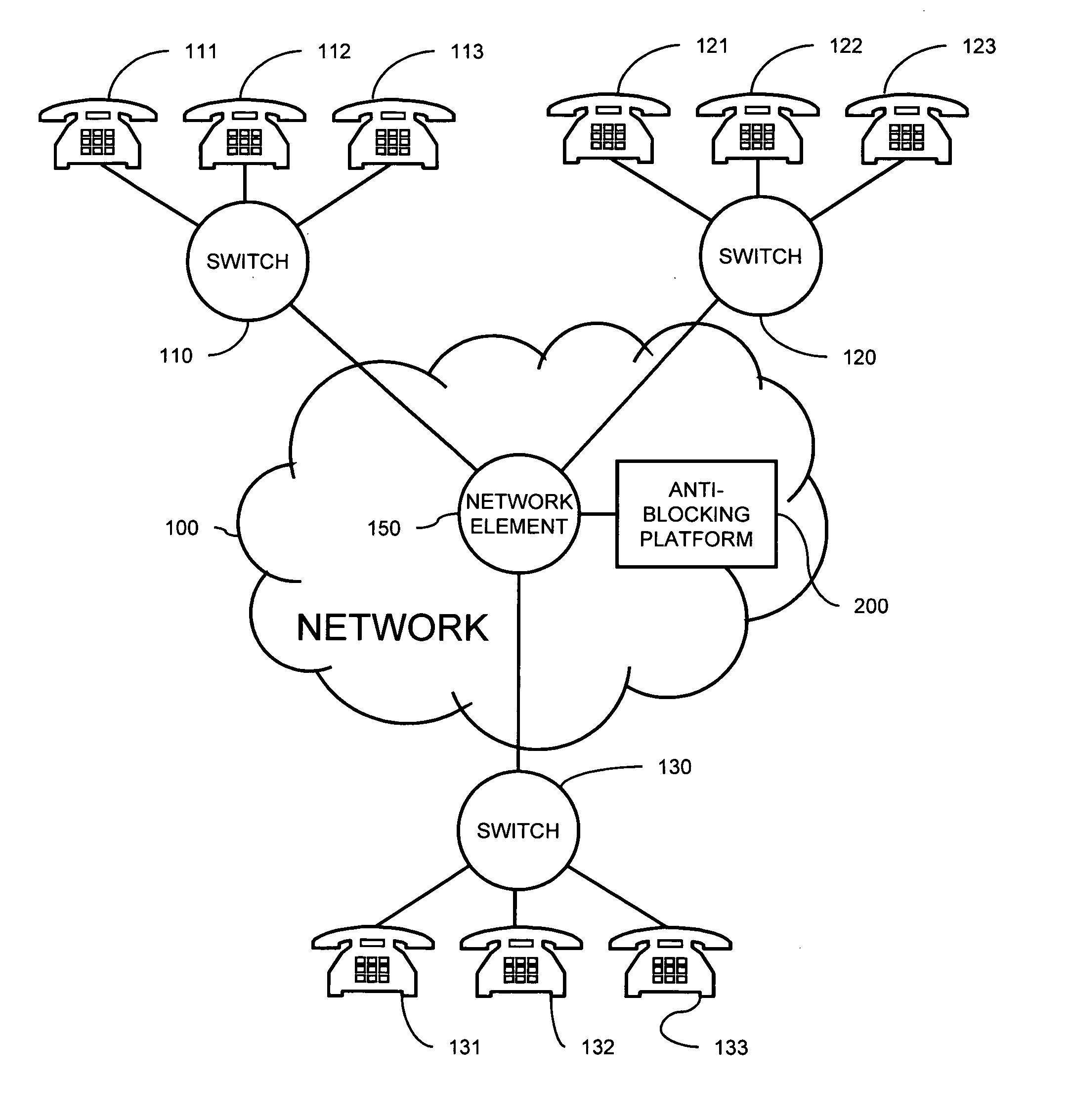Auto-dialer blocking on network
- Summary
- Abstract
- Description
- Claims
- Application Information
AI Technical Summary
Benefits of technology
Problems solved by technology
Method used
Image
Examples
Embodiment Construction
[0015]To overcome the problem of call blocking resulting from surges in call volume, the system and method of the present invention use a cache memory to temporarily store overflow calls. The overflow calls are “cached” based on certain parameters, such as reaching a certain peak number of calls or filling the alternate route(s) to capacity. Once in the cache, the calls are dealt with as system resources become available and sent on to completion. The cache has the effect of slowing down the rate at which calls must be connected.
[0016]A telecommunications network in accordance with the invention is shown in FIG. 1. Telephone stations 111, 112, 113 are connected through a switch 110 to a communications network 100 such as the Public Switched Telephone Network (PSTN), or a Voice over Internet Protocol (VoIP) network. The switch 110 may be in a central office of a local carrier (not shown). Other telephone stations 121, 122, 123 are connected through switch 120, and stations 131, 132, ...
PUM
 Login to View More
Login to View More Abstract
Description
Claims
Application Information
 Login to View More
Login to View More - R&D
- Intellectual Property
- Life Sciences
- Materials
- Tech Scout
- Unparalleled Data Quality
- Higher Quality Content
- 60% Fewer Hallucinations
Browse by: Latest US Patents, China's latest patents, Technical Efficacy Thesaurus, Application Domain, Technology Topic, Popular Technical Reports.
© 2025 PatSnap. All rights reserved.Legal|Privacy policy|Modern Slavery Act Transparency Statement|Sitemap|About US| Contact US: help@patsnap.com



